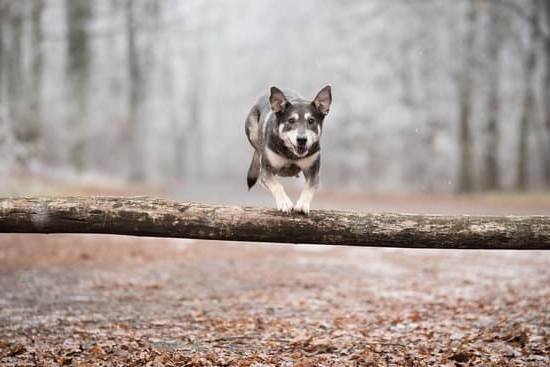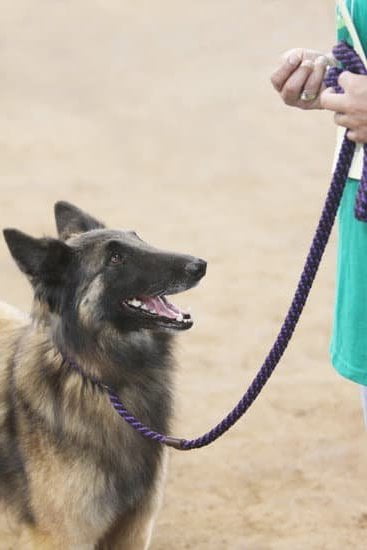Are small dogs harder to train than big dogs? This is a common question among dog owners and enthusiasts. In this article, we will explore the myths and realities of small vs big dog training, and delve into the differences in behavior, the impact of size on training, as well as the challenges and training tips for both small and big dogs.
When it comes to training our furry companions, there is often a misconception that small dogs are more difficult to train compared to their larger counterparts. The truth is, each size comes with its own set of unique challenges and training requirements. Understanding these differences is crucial in effectively training our pets and building a strong bond with them.
In the following sections, we will discuss the behavior disparities between small and big dogs, analyze the impact of size on their training, debunk common misconceptions about small dog training challenges, address the unique obstacles in training big dogs, and provide valuable tips for overcoming perceived difficulties in both cases. Join us as we navigate through the world of dog training and discover that size doesn’t matter – it’s all about understanding and patience.
Understanding the Differences in Behavior
When it comes to understanding the differences in behavior between small and big dogs, there are several factors to consider. From their energy levels to their socialization tendencies, each dog size has its own unique traits that can influence their behavior and training needs.
Energy Levels
One of the most noticeable differences between small and big dogs is their energy levels. Small dogs are often known for being more energetic and high-strung, while big dogs tend to have a calmer demeanor. This difference in energy levels can impact training, as small dogs may require more frequent exercise and mental stimulation to stay focused during training sessions.
Socialization Tendencies
Small and big dogs also differ in their socialization tendencies. Small breeds are often more prone to developing “small dog syndrome,” which can include behaviors such as excessive barking, fearfulness, and aggression towards other dogs. On the other hand, big dogs may exhibit protective or territorial behaviors due to their natural instinct to guard and protect their families.
Communication Styles
Another key difference in behavior between small and big dogs is their communication styles. Small dogs may be more vocal and expressive through barking, whining, or growling, while big dogs may rely on body language and physical cues to communicate with their owners and other animals.
Understanding these differences in behavior is essential for tailoring training approaches to suit the specific needs of small versus big dogs. By recognizing these distinctions, trainers can better address the unique behavioral challenges associated with each dog size.
The Impact of Size on Training
When it comes to training dogs, many people believe that small dogs are harder to train than big dogs. However, the truth is that the size of the dog does not necessarily determine how easy or difficult they are to train. In fact, there are several factors that play a role in a dog’s trainability, regardless of their size.
One common misconception is that small dogs are more difficult to train because they tend to have a stubborn or feisty temperament. While it’s true that some small breeds have a reputation for being more independent, it doesn’t mean that they are inherently harder to train. In reality, the key to successful training lies in understanding the individual needs and behaviors of each dog, regardless of their size.
In addition, the impact of size on training also depends on the owner’s approach and consistency in training. Small dogs may be perceived as harder to train because their behavior issues can be overlooked or dismissed due to their size.
On the other hand, big dogs may be perceived as easier to train simply because they are physically stronger and can be more easily controlled. However, both small and big dogs require consistent training and positive reinforcement in order to learn obedience and good behavior.
| Training Challenge | Key Consideration |
|---|---|
| Small Dogs | Perceived as more stubborn or feisty |
| Big Dogs | Perceived as physically stronger and easier to control |
Small Dog Training Challenges
Small dog training often comes with its fair share of challenges, leading to the common misconception that small dogs are harder to train than big dogs. However, it’s important to debunk this myth and understand the unique obstacles that come with training small dogs.
Size Bias
One of the most common misconceptions about small dogs is the belief that their size makes them more difficult to train. This bias leads many people to believe that small dogs are inherently more stubborn or independent than larger breeds. In reality, a dog’s behavior and trainability are not determined by their size, but rather by their individual temperament and personality.
Perceived Fragility
Another challenge in training small dogs is the misconception that they are too delicate for traditional training methods. Some owners may be hesitant to use firm commands or corrections for fear of harming their small dog. This can lead to inconsistent discipline, making it difficult for the small dog to understand what is expected of them.
Misunderstanding Energy Levels
Small dogs are often thought of as being less energetic than big dogs, leading some owners to neglect their exercise and mental stimulation needs. This misunderstanding can result in behavioral issues such as excessive barking or destructive behavior. It’s important for owners to recognize that all dogs, regardless of size, require regular physical activity and mental enrichment to thrive.
By addressing these common misconceptions and understanding the specific challenges that come with training small dogs, owners can approach their pet’s education with patience and a willingness to adapt their methods based on individual needs. Size should not be a determining factor in a dog’s trainability; rather, it is essential for owners to recognize each dog as an individual with unique traits and behaviors that require tailored training approaches.
Big Dog Training Challenges
Big dogs come with their own set of unique training challenges that can vary significantly from those encountered when training small dogs. One common misconception is that big dogs are naturally more well-behaved and easier to train due to their size and strength. In reality, big dogs often present their own set of obstacles, including issues related to socialization, leash manners, and impulse control.
One of the key differences in training big dogs versus small dogs is the physical strength and power that comes with their size. This can make it more challenging to manage big dogs during training sessions, particularly if they have not been properly leash trained. Additionally, some larger breeds may have a predisposition towards behaviors such as pulling on the leash or jumping on people due to their size and energy levels.
Socialization is another area where big dogs often require special attention during training. While all dogs benefit from early socialization, it is particularly important for larger breeds who have the potential to cause harm if they exhibit fear-based aggression or lack proper manners around other animals and people.
It’s important for trainers and owners of big dogs to understand that while there may be unique challenges associated with training them, these challenges can be successfully addressed with patience, consistency, and positive reinforcement techniques.
| Big Dog Training Challenges | Unique Obstacles Addressed |
|---|---|
| Physical strength and power | Leash manners and impulse control |
| Socialization needs | Fear-based aggression management |
Training Tips for Small Dogs
Training small dogs can be a unique challenge, but it is not an impossible task. With the right approach and understanding of their behavior, small dogs can be just as well-trained as their larger counterparts. Here are some training tips for small dogs to help overcome the perceived difficulties:
- Patience is key: Small dogs can sometimes have a reputation for being stubborn or difficult to train, but it’s important to remember that they are just as capable of learning as big dogs. Be patient and consistent in your training approach, and you will see results.
- Use positive reinforcement: Small dogs respond well to positive reinforcement, such as treats, praise, and rewards. When they exhibit the desired behavior, make sure to reward them right away to reinforce the behavior.
- Focus on socialization: Small dogs can sometimes exhibit fear-based behaviors if they are not properly socialized. Expose them to different people, animals, and environments in a controlled and positive way to help them feel more comfortable in various situations.
In addition to these tips, it’s important for small dog owners to understand that consistency and clear communication are essential in their training efforts. By providing structure and guidance in a gentle and positive manner, small dogs can thrive in their obedience training.
It’s also helpful for owners of small breeds to seek out professional guidance or obedience classes specifically tailored for small dogs. These specialized resources can provide valuable support and insights into effectively training smaller canine companions. Remember that with patience, dedication, and the right approach, small dogs can absolutely become well-behaved and obedient pets.
Training Tips for Big Dogs
When it comes to training big dogs, there are certain challenges that owners may face due to their size and strength. However, with the right approach and techniques, these challenges can be overcome.
Here are some training tips for big dogs:
1. Use Positive Reinforcement: Big dogs respond well to positive reinforcement, such as treats, praise, and toys. When they exhibit good behavior, reward them immediately to reinforce the desired action.
2. Establish Leadership: It is important for owners to establish themselves as the pack leader when training big dogs. This can be achieved through consistent rules, boundaries, and limitations.
3. Leverage Their Intelligence: Many big dog breeds are highly intelligent and can excel in training if mentally stimulated. Engage them in activities that challenge their problem-solving skills, such as puzzle toys or interactive games.
4. Be Patient and Consistent: Training a big dog requires patience and consistency. Keep training sessions short and frequent to prevent boredom or frustration.
By employing these training tips, owners can effectively navigate the specific challenges of training big dogs and build a strong bond with their canine companions. Remember that every dog is unique, so it’s essential to tailor the training approach to suit your dog’s individual needs and personality traits.
Conclusion
In conclusion, the debate over whether small dogs are harder to train than big dogs has been thoroughly explored through this article. While there are certainly differences in behavior and specific challenges when it comes to training both small and big dogs, the overall conclusion is that size doesn’t matter. What truly matters in training any dog, regardless of size, is understanding their individual behaviors and being patient throughout the process.
While small dogs may be perceived as more difficult to train due to their stubbornness or tendencies towards barking, it’s important to recognize that these can be overcome with the right approach. Similarly, big dogs may pose challenges due to their size and strength, but with proper techniques and consistency, they can become well-behaved companions. The key is understanding the unique traits of each breed and adjusting training methods accordingly.
Ultimately, whether you have a small or big dog, the most important aspects of successful training are perseverance, consistency, and positive reinforcement. Both types of dogs require attention, love, and understanding from their owners in order to thrive. So rather than focusing on the size of your canine companion, focus on building a strong bond through effective training methods. Size truly doesn’t matter when it comes to dog training; it’s all about understanding and patience.
Frequently Asked Questions
What Is the Hardest Dog to Train?
The hardest dog to train can vary depending on the individual dog and its breed. However, generally, some of the more independent and strong-willed breeds like the Siberian Husky or Afghan Hound can be more challenging to train due to their stubborn nature.
Do Small Dogs Have More Problems Than Big Dogs?
Small dogs do not necessarily have more problems than big dogs, but they can present different challenges. Small dogs may struggle with confidence issues and be more prone to develop small dog syndrome, leading to behavioral problems if not properly trained and socialized.
Are Big Dogs Better Behaved Than Small Dogs?
It is not accurate to say that big dogs are inherently better behaved than small dogs. The behavior of a dog depends on various factors such as training, socialization, and individual temperament. Proper training and handling are essential for both big and small dogs to exhibit good behavior.

Welcome to the blog! I am a professional dog trainer and have been working with dogs for many years. In this blog, I will be discussing various topics related to dog training, including tips, tricks, and advice. I hope you find this information helpful and informative. Thanks for reading!





